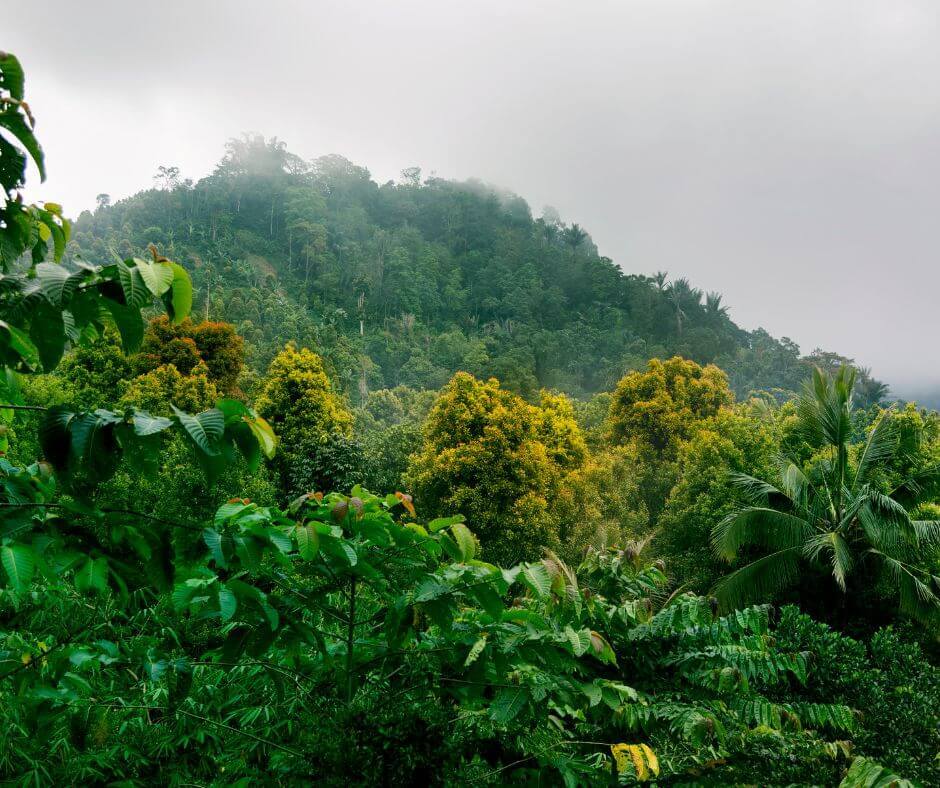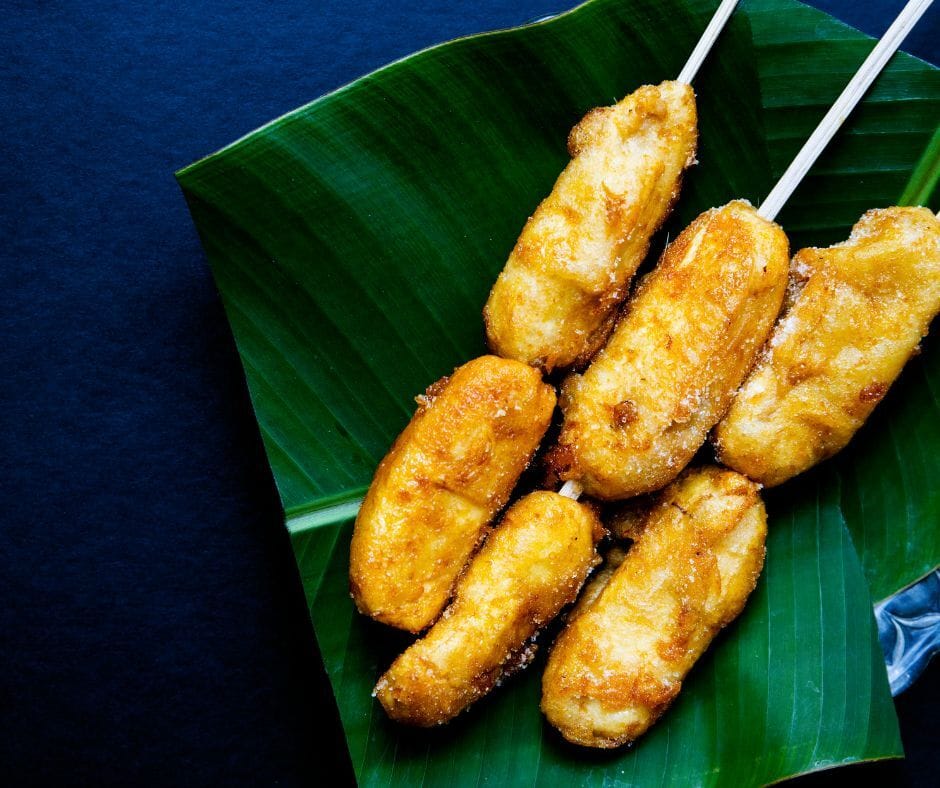- Finding Utopia Newsletter
- Posts
- Types of Forests in the Philippines — A Tapestry of Green Landscapes
Types of Forests in the Philippines — A Tapestry of Green Landscapes
Stories: Types of Forests in the Philippines — A Tapestry of Green Landscapes; Banana Cue — A Sweet Street Snack That Speaks Filipino Heart

Hello and Mabuhay!
Welcome to Finding Utopia — your trusted guide to exploring the wonders of the Philippines and beyond.
In this edition, we bring you inspiring stories and essential travel insights to fuel your next adventure:
Types of Forests in the Philippines — A Tapestry of Green Landscapes
Banana Cue — A Sweet Street Snack That Speaks Filipino Heart
Wherever you're dreaming of going next, we're here to guide you closer to your utopia.
Enjoy the read!
— The Finding Utopia Team
Types of Forests in the Philippines — A Tapestry of Green Landscapes

From mangrove root-tangles by the coast to mist-shrouded mossy forests high in the mountains, the Philippines hosts a remarkable diversity of forest types. Each one tells a story of soil, sea, elevation and culture—of how communities and nature co-exist across the archipelago. In our latest blog post, we map out the major forest formations of the Philippines and why they matter both ecologically and for your journey through the islands.
From Beach to Peak: Forest Formations Across Elevation
The journey begins at the shoreline and rises steadily toward the clouds:
Mangrove & Beach Forests: At sea level, mangrove forests thrive where saltwater and freshwater meet—trees like Rhizophora and Avicennia anchor muddy flats and protect shorelines from storms. Adjacent sand-beach forests form narrow strips behind the dunes, sheltering coastal life and adding a green fringe to golden sand.
Dipterocarp & Molave Forests: Moving inland and upward (lowlands up to ~800 m), the dipterocarp forests dominate with towering trees that once formed the backbone of the timber industry. Molave forests, on limestone or drier soils, host fewer trees but hardy species adapted to harsher conditions.
Pine, Montane & Mossy Forests: At higher altitudes the forest shifts: pine stands appear, and further up, montane and mossy forests—shorter trees, thick moss, epiphytes clinging to branches—reflect cooler temperatures and high moisture.
Why These Forests Matter
These forests are not just pretty backdrops—they are vital systems:
Biodiversity hotspots: Many endemic species call each forest zone home, each adapted to very specific conditions of altitude, soil and climate.
Ecosystem services: They regulate water, protect coastlines from erosion, store carbon, and support livelihoods—from fishing near mangroves to harvesting forest products in the highlands.
Cultural landscapes: Forests influence local traditions, materials (timber or non-timber forest products) and even tourism: hiking in mossy forests, snorkeling near mangroves, spotting endemic wildlife.
How to Engage Respectfully When You Visit
Stay on marked trails, especially in montane or mossy forests where the soil and roots are fragile.
In coastal forests (mangrove or beach), opt for eco-tourism tours that support reforestation and local community livelihoods.
Learn local names: ask about tree species, bird calls, forest uses by indigenous or local communities—these forests carry stories beyond the scenery.
Leave no trace: forest floors are delicate, water flows depend on intact tree cover, and human impact can be heavier than you expect.
Forests in the Philippines are living layers of nature and culture. When you walk into a dipterocarp canopy or paddle through a mangrove root-maze, you’re stepping into ecosystems shaped over millennia—and into stories of people, places and heritage.
Become An AI Expert In Just 5 Minutes
If you’re a decision maker at your company, you need to be on the bleeding edge of, well, everything. But before you go signing up for seminars, conferences, lunch ‘n learns, and all that jazz, just know there’s a far better (and simpler) way: Subscribing to The Deep View.
This daily newsletter condenses everything you need to know about the latest and greatest AI developments into a 5-minute read. Squeeze it into your morning coffee break and before you know it, you’ll be an expert too.
Subscribe right here. It’s totally free, wildly informative, and trusted by 600,000+ readers at Google, Meta, Microsoft, and beyond.
Banana Cue — A Sweet Street Snack That Speaks Filipino Heart

In the streets of the Philippines, one of the most beloved snacks isn’t served in a fancy bistro—it’s offered from a humble pushcart, crackling and fragrant under the afternoon sun. Banana Cue is more than fried bananas on a stick; it is a snapshot of Filipino merriment, culture and simplicity all wrapped in warm caramel and served for a stroll. From the choice of banana to the sticky sugar coating, this snack tells a story about food, memory and togetherness.
What Makes It Banana Cue
Banana Cue starts with the right banana: the firm, almost cooking-banana variety known as saba. That earthy sweetness and texture hold up under frying and sugar. Then comes the process: deep-fry the saba bananas until golden, add brown sugar that melts and coats each piece, then thread onto bamboo skewers for easy on-the-go fun.
The name itself — “banana” + “cue” (from barbecue) — evokes the skewered serving style rather than grilling.
Simple Recipe, Big Flavour
Here’s how you can taste a little piece of Filipino street-food culture at home:
Peel firm, yellow saba bananas (avoid brown-spotted over-ripe ones for frying).
Heat canola (or neutral) oil in a deep pan and fry the bananas for about two minutes until they soften slightly.
Sprinkle 2 cups of brown sugar over the bananas, stir gently so they become coated with caramelised sugar. Watch closely to avoid burning.
Remove from oil, drain excess, skewer two bananas per stick, and serve warm.
Pro tips:
Don’t overcrowd the pan: give each banana space to caramelise evenly.
Use muscovado sugar as a variation for deeper flavour.
Serve immediately while the sugar coating is crisp – the texture shifts if it sits too long.
Why Banana Cue Matters
This snack is more than a quick bite.
Cultural anchor: For many Filipinos it evokes childhood, school-yard snacks, and local vendor memories.
Accessible indulgence: It turns humble ingredients into something memorable—sweet, sticky, portable.
Travel moment: If you’re exploring Manila or the provinces, spotting a banana cue seller is a chance to taste local rhythm.
Taste It Respectfully
When you stop by a street cart:
Ask politely if you can take a photo (vendors often welcome it).
Try one stick with a cold drink – the contrast of warm caramelised banana and cool drink is part of the joy.
Take a moment to chat: the vendor may have a story about how they make it, or where they buy the bananas.
Enjoy the treat. Enjoy the moment. Banana Cue is not just snack—it’s street-food culture shaped by sweetness and community.

The Briefing Leaders Rely On.
In a landscape flooded with hype and surface-level reporting, The Daily Upside delivers what business leaders actually need: clear, concise, and actionable intelligence on markets, strategy, and business innovation.
Founded by former bankers and veteran business journalists, it's built for decision-makers — not spectators. From macroeconomic shifts to sector-specific trends, The Daily Upside helps executives stay ahead of what’s shaping their industries.
That’s why over 1 million readers, including C-suite executives and senior decision-makers, start their day with it.
No noise. No jargon. Just business insight that drives results.
The best marketing ideas come from marketers who live it. That’s what The Marketing Millennials delivers: real insights, fresh takes, and no fluff. Written by Daniel Murray, a marketer who knows what works, this newsletter cuts through the noise so you can stop guessing and start winning. Subscribe and level up your marketing game.






Reply